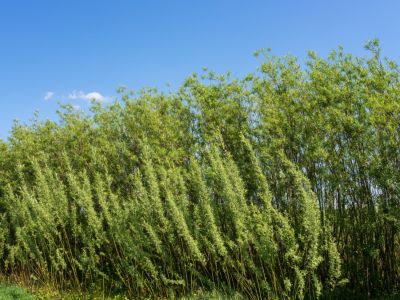The fedge grows quickly, often 6 feet (2 m.) per year, so trimming is necessary to train the structure in the shape you want.
Live Willow Fence Making: Learn About Planting A Living Willow Fence
Live willow fence making begins with the preparation of the site. Choose a moisture-retentive area in full sun for the best growth, but Salix is not fussy about soil. Plant at least 33 feet (10 m.) from any drains or structures. Clear the grass and weeds on the site. Loosen the soil about 10 inches (25 cm.) deep and work in some compost. Now you are ready to order your willow rods. Specialist growers typically sell one-year rods in different widths and strengths, depending on the Salix variety. You need rod lengths of 6 feet (2 m.) or more. The number of rods you need will depend on how long the fence will be and how close together you insert the rods.
Living Willow Fence Ideas – Tips for Growing a Living Willow Fence
To install your fedge in spring, first prepare holes in the soil with a screwdriver or dowel rod. Insert half the willow stems in the ground about 8 inches (20 cm.) deep and about 10 inches (25 cm.) apart at 45-degree angles. Then come back and insert the other half of the stems in between, angled the opposite direction, creating a diamond pattern. You can tie some of the joints together for stability. Add mulch to the ground around the stems to conserve moisture and cut down on weeds. As the roots develop and the willow grows, you can train the new growth into the existing design to make it taller or weave it into bare spots.
